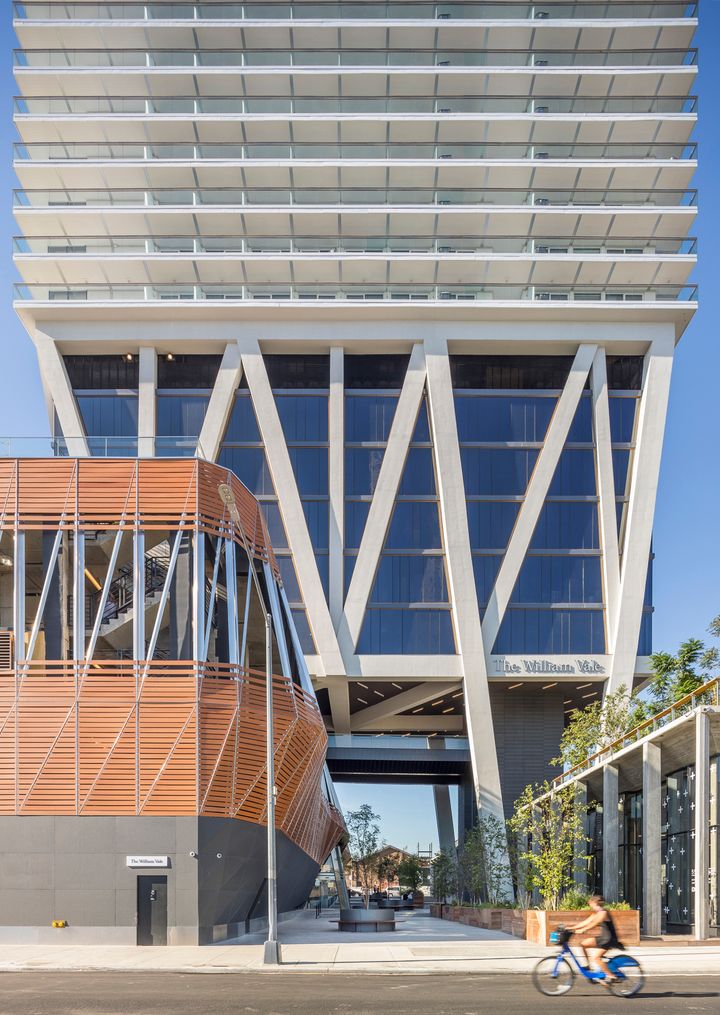
Building and Plaza from North 13th Street.
If you’ve recently been in Williamsburg, Brooklyn you’ve likely noticed a new iconic building in your line of sight. Whether you like it or hate it, there's no denying the scale of its presence in the Brooklyn skyline. The William Vale, designed by Brooklyn locals Albo Liberis and developed by Zelig Weiss, is absolutely visually magnetic. Amongst Brooklyn’s newest boutique hotels, The William Vale hosts a variety of attractive park-like public spaces, New York City’s largest hotel rooftop pool, and possibly the city's most picturesque panorama of Manhattan and the surrounding boroughs from the hotel's rooftop bar and restaurant. Trust me, I’ve experienced it first hand (with a cocktail in my other hand). For me, hands down, The William Vale is a triumph.
But the real story here isn’t simply the end result: the journey is even more fascinating than the arrival itself. Those that are familiar with the construction process know that architecture is most often a distinct precursor to construction. This isn’t to say that the architect is typically unengaged with the contractor, but their roles are more often than not very separate. Typically the architect designs and blueprints and the contractor builds and assembles. Even with design-build projects, a methodology whereby a single organization operates as both the architect and contractor, the phases are predominantly sequenced one after the other. At The William Vale however, these two disciplines intersect almost entirely within an interchange of design-construct-design. For example, as problems would emerge on site, Nick Liberis and Yohay Albo, Principals at Albo Liberis, would spend their days personally scouting local building product suppliers (and occasionally even a local Home Depot) to source new materials, and would spend their nights altering the design to advance the construction and avoid slowdowns. As such, the problem solving didn’t occur on paper as is more normally the case in the industry, rather the build of the 3D trussed superstructure itself operated as its own prototype that would eventually birth a completed building. It’s almost as though this building was constructed the way I remember myself and fellow students at the time creating models in architecture school. I was fortunate to spend some time with Albo and Liberis to discuss this remarkable homegrown production that yielded The William Vale.
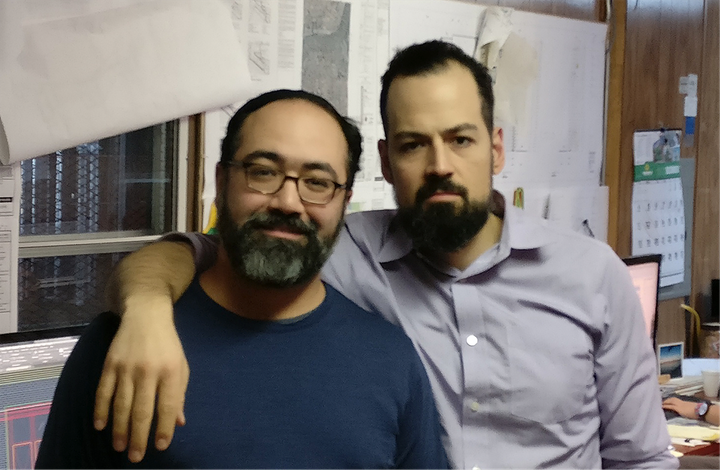
Yochay Albo (left); Nick Liberis (right).
Jacob Slevin: In 140 characters or less, please define your design thesis for The William Vale.
Yohay Albo& Nick Liberis: Achieve the best experience of a building woven into surrounding fabric on a limited budget & timeframe, for the public & hotel guests alike.
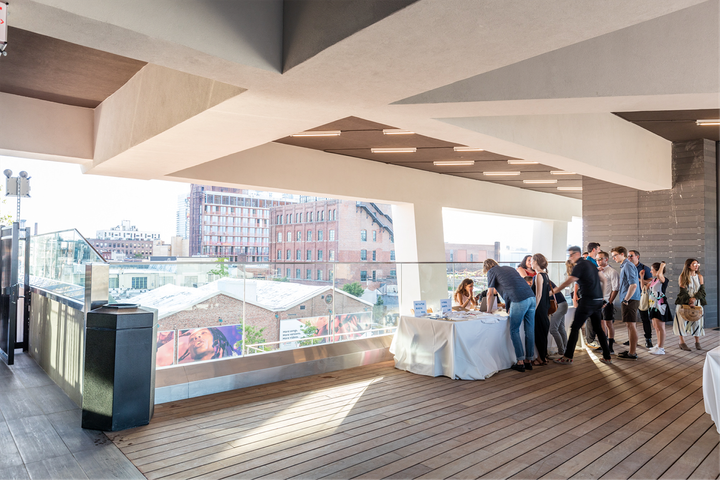
The Bridge.
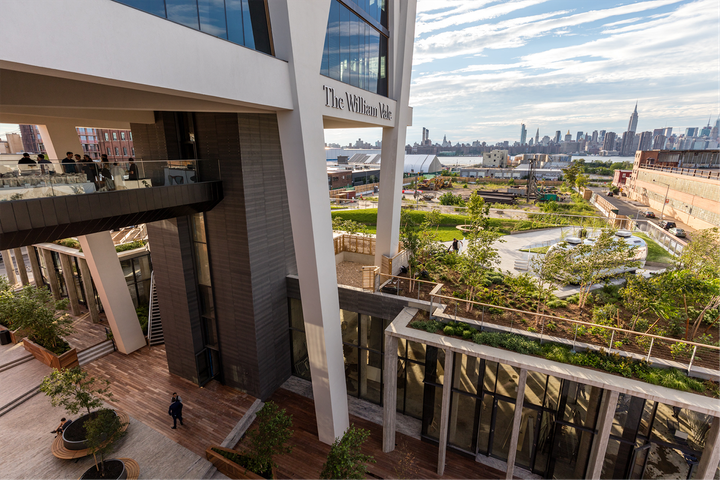
North Plaza.
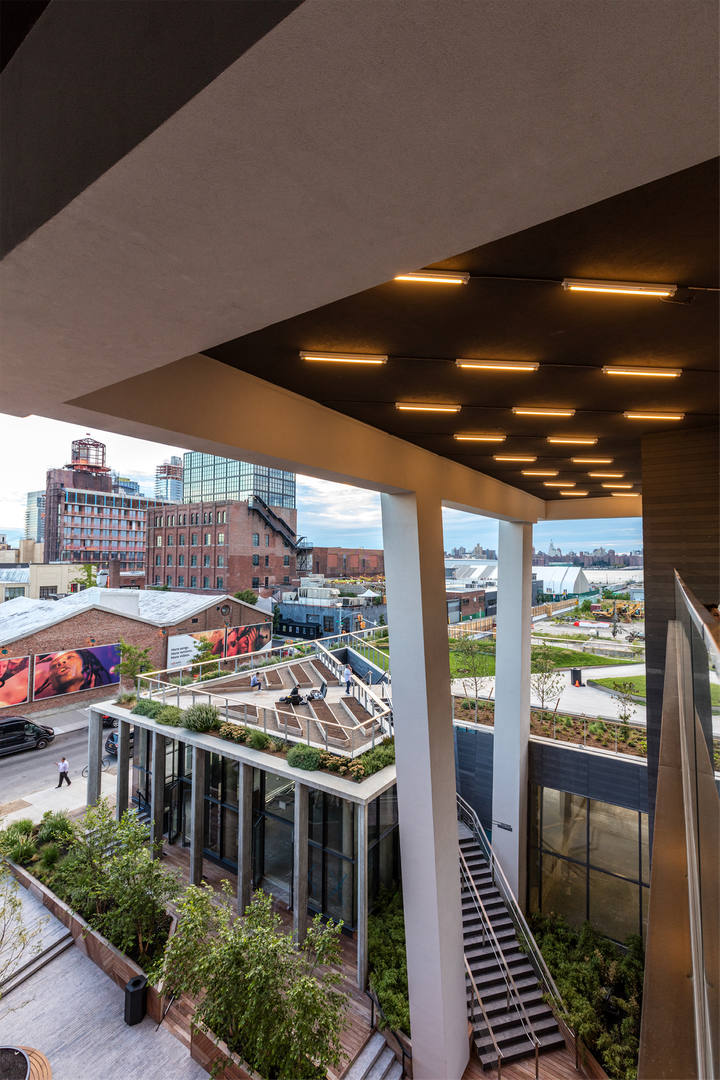
South Plaza View from Bridge.
Jacob Slevin: Upon learning about The William Vale, it becomes quite apparent that the design process and construction process were intertwined. Was this intentional at the forefront and how did this union impact the final result?
Yohay Albo& Nick Liberis: This was intentional for a few reasons: we knew the anticipated date to completion was going to result in various re-design on the fly situations for reasons ranging from material lead time limitations to having to adjust to as-yet unanticipated site or construction constraints.The owner understood this as well early on, and its why he contracted our office exclusively through the duration of the project in the role we had.A few of the structural features of the building required an understanding of the construction sequencing in order to plan around staging processes necessary to the building project, for example, the truss construction had to be supported by temporary steel support, so we needed to adjust the design because certain slabs and building elements had to work around the temporary steel. Additionally, and very importantly, the opportunity to have the design and construction be so intertwined offers the best chance at expressing the original design intent even though details and materiality may evolve through the construction process.It’s more akin to a design build model, or an older master builder way of construction.
We think the union of the design and construction processes was successful in this case, in that it greatly streamlined the construction process and yielded something quite close to our original intent in a relatively short timeframe.
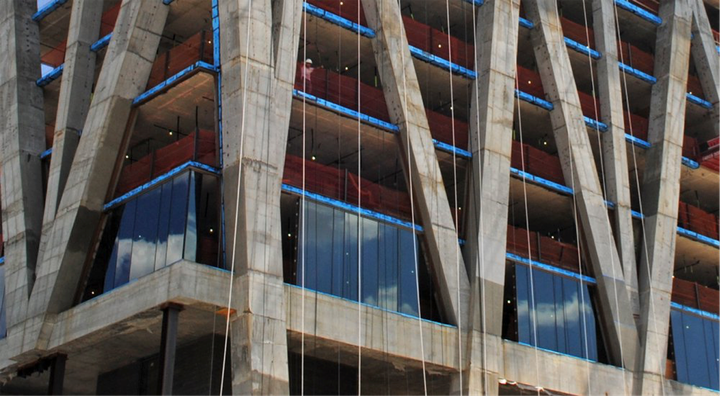
Concrete Truss Construction Photo.
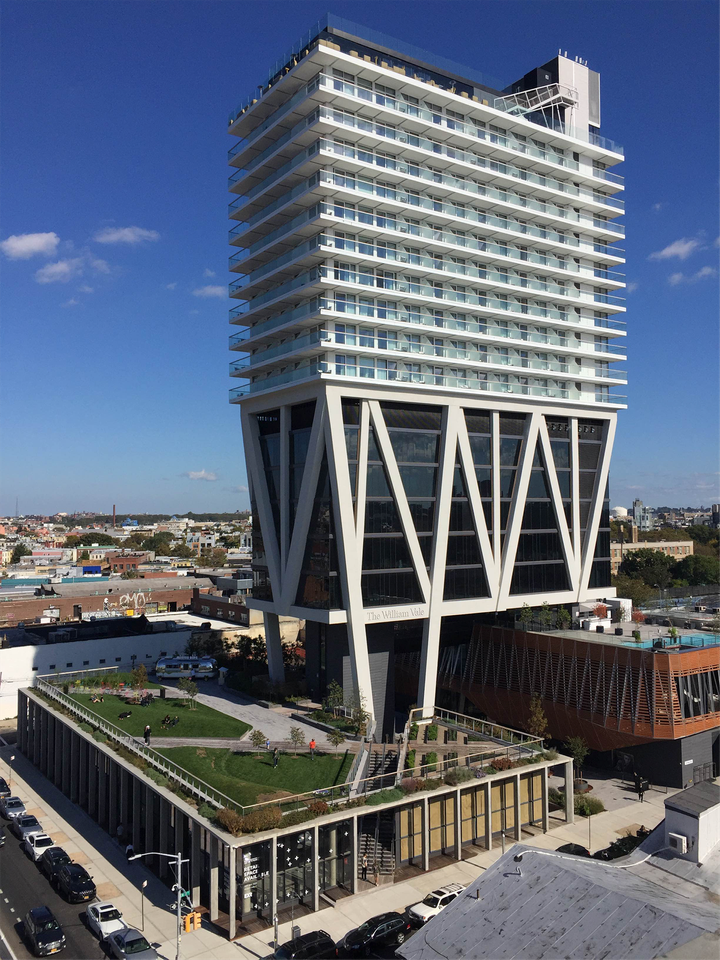
Building Perspective.
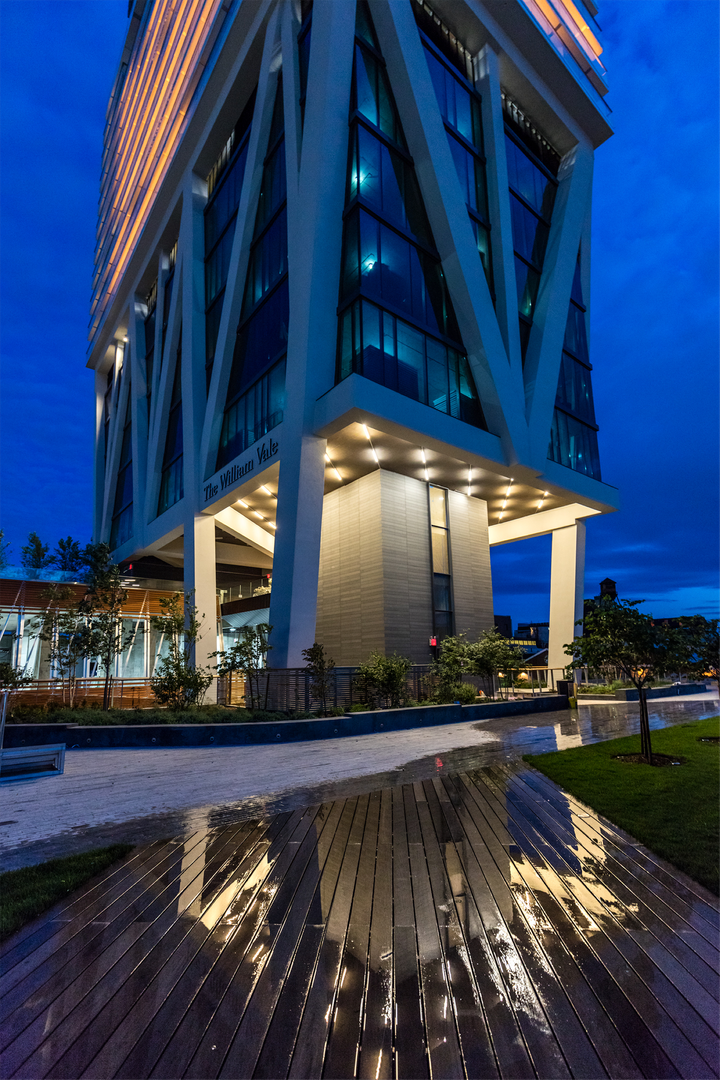
Hotel Tower from Green Roof.
Jacob Slevin: Talk to me about materials. How were they selected?
Yohay Albo& Nick Liberis: When the project began, the project deadlines required us to analyze how steel would fare against concrete in terms of speed of construction. Steel was the obvious choice at the time, and conceptually, it was elegant because of how much less material we would need to execute the design. One thing we didn't consider was that for this slightly unorthodox design, steel erectors didn't want to entertain the timelines the client required. Steel erection is an inherently dangerous undertaking, and the truss structure required certain precautions that would have slowed down the construction process in a way that the client wouldn't accept. As we were completing the two concrete structure podia on either side of the central plaza, the structural engineer transposed the steel structural design into a concrete superstructure. For one frantic month, we went back and forth with the structural engineer every day, changing every part of the design and making sure everything worked and maintained as much of the original geometry as possible. Another interesting thing about the concrete superstructure is the immense strength specified for certain structural members. The stronger material can be extremely viscous as its being poured because of additives necessary to keep the concrete workable, and everything from formwork bracing to cleanup procedures had to be adjusted for this. Suffice it to say that having to jackhammer out 18KPSI of sloppily discarded concrete at the site perimeters teaches you a good lesson in keeping a site clean.
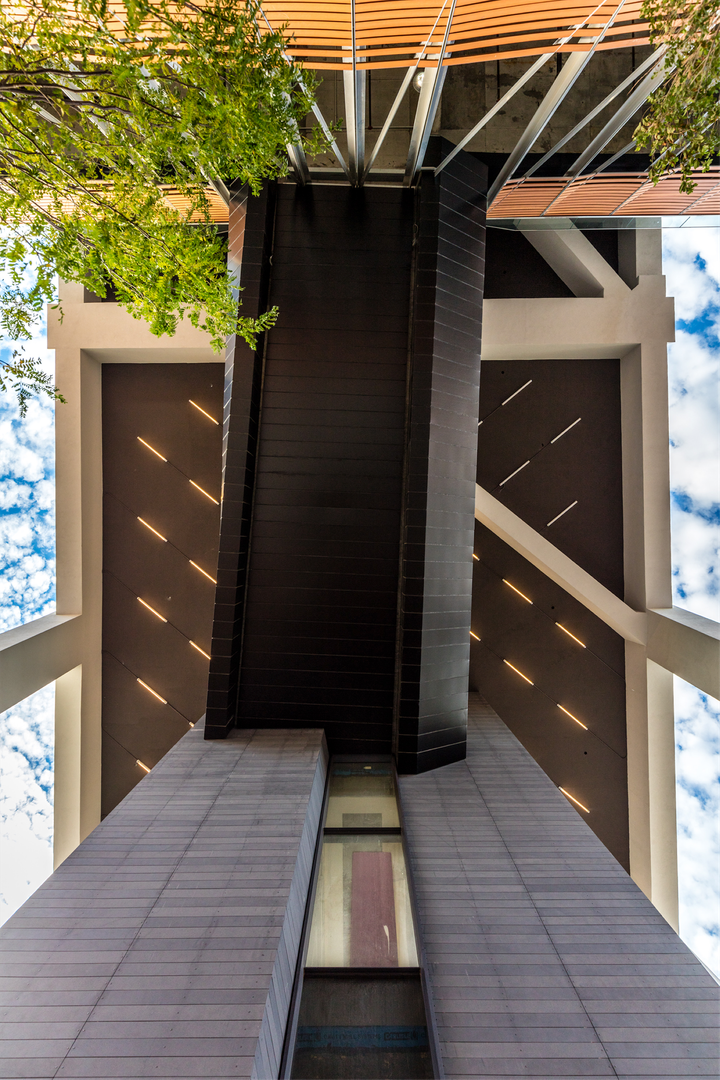
Underside of Tower and Bridge.
Another consideration owing to the speed of construction was the form factor of cladding materials. We knew that we would be ordering products on an expedited timeline, and this ruled out certain solutions that would require longer lead times due to fabrication. The solution was panelized products that could be modified easily on site, and set the stage for the more aesthetic and tactile considerations in material selection.
We were struck by how much cladding material the building required. There are generally only so many sides to a building, but with this design's disaggregated building forms distributed throughout the site, there is significantly more surface area than a building occupying the site in a single piece. The amount of material allowed us to specify materials in a more environmentally responsible way than a smaller project may have allowed, owing to efficiencies of scale in material orders mainly. We were committed to getting as much sustainably sourced material as we could, and to specifying materials with an eye towards future re-use and recyclability. The majority of the tower and lower hotel building facades are clad in a material called Resysta, which is an extruded product made entirely of rice husks, salt and mineral oil. We used recycled insulation where we could, and all the exterior concrete finishes are a product modeled on older hydraulic mortars that are lime and pozzolane based. Another environmentally responsibly characteristic we sought in materials was extreme durability, and the cement fiber paneling, ipe and cumaru woods in other parts of the project met this criterion ably.
Regarding the concrete retail building on Wythe, our intent was to increase porosity at the edge of the site by slightly recessing the building face. The loggia and stepping deck therein are intended to encourage pedestrians to enliven and activate the perimeter of the site with their presence, and the tactile dimension of this perimeter space is vital to encourage use per the intent. We worked with several different methods and wood species to determine how to most deeply imprint wood grain into the very viscous concrete mix, and the mix itself was lightened and will continue to lighten in the sun, eventually looking like bleached wood we suspect. We chose ipe for the decks in the loggia because of its strength, impermeability and warm color, and the total effect is warm and inviting, something that we as pedestrians would like to engage with.
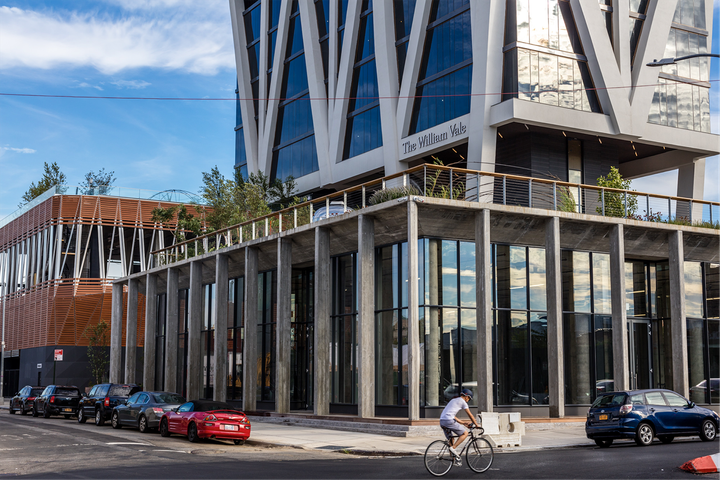
Retail Colonnade from Wythe Ave.
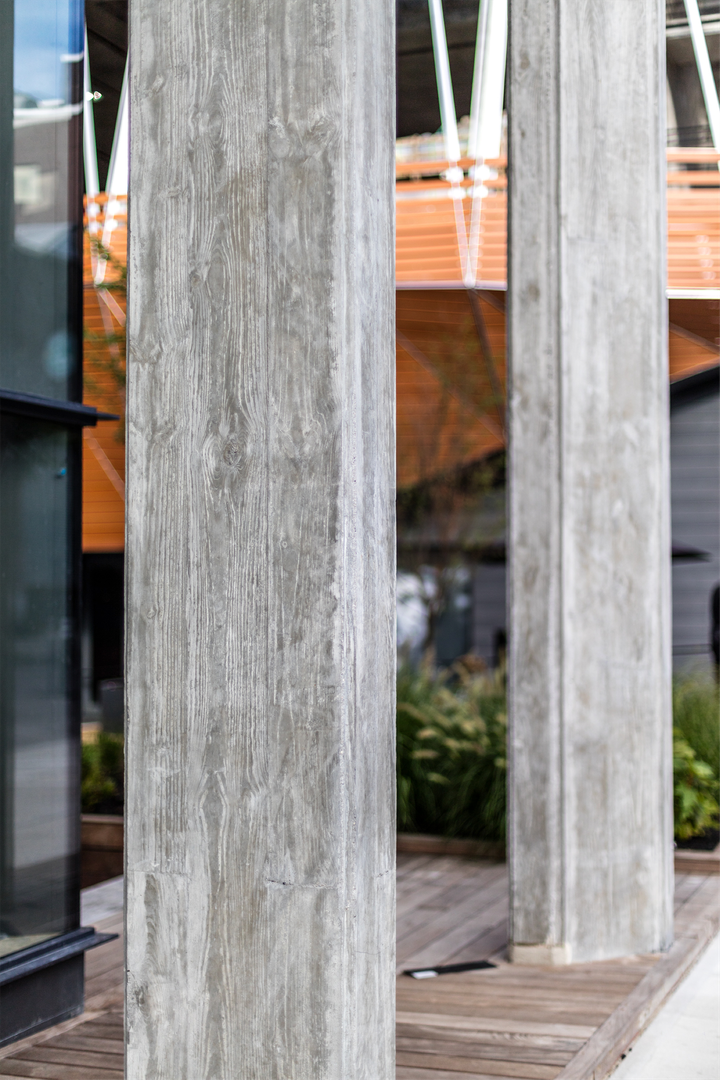
Concrete Colonnade Detail.

Concrete Column Detail.
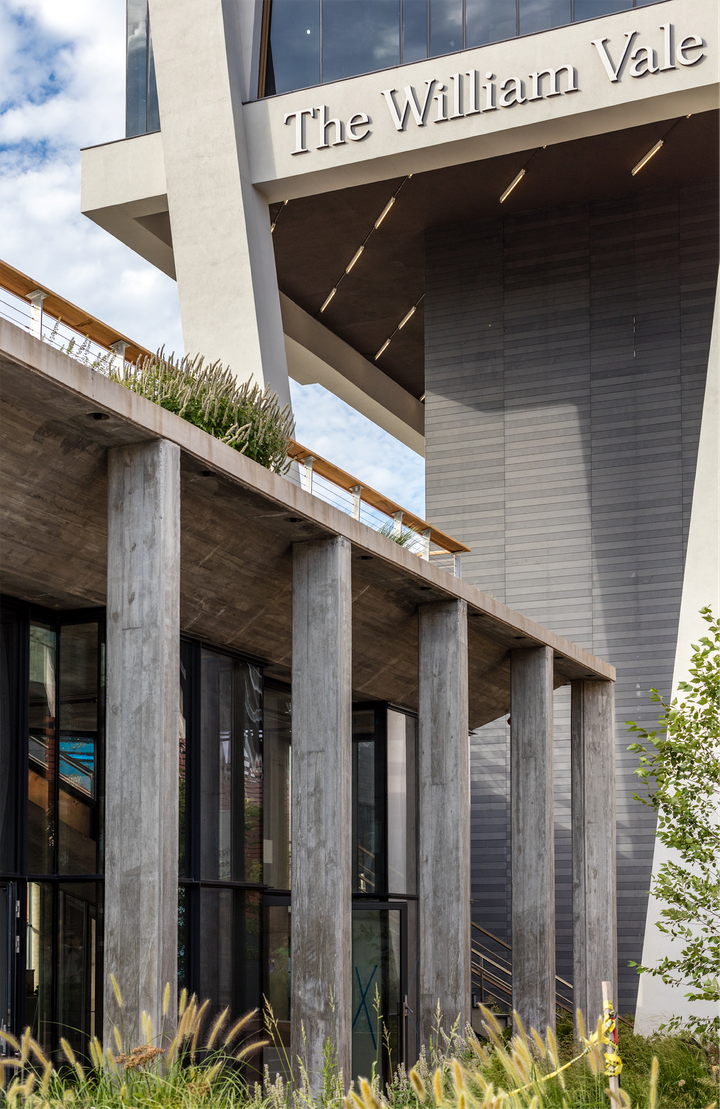
Concrete Colonnade in Plaza.
Jacob Slevin: What's the role of public space at The William Vale?
Yohay Albo& Nick Liberis: Everything starts and ends with the client's program and desires for a project, and we were very lucky to have a considerate client in Zelig Weiss, who understood very early on how public space would have an incredibly important but also financially indeterminate effect on the profitability of the project. The latter point is what makes Mr. Weiss' decision to include so much publicly accessible space unique. Many developers would refuse to consider a design proposition such as The William Vale's publicly accessible spaces, as its impossible to really quantify their financial impact on the project. We all agreed that we like these spaces, that they felt right, and we could imagine them appealing to others in the same way, but we didn't have a metric to accurately assess what these spaces could potentially add.

Center Plaza from North 12th St.
Sculpturally, these interstitial public spaces function similarly to a rest in a musical piece, in which a pause or formal void shapes an entire composition by defining or highlighting adjacent entities with conspicuous absences. There is a physiological analogue to these voids as well, in that the rhythm of emptiness and fullness can be reminiscent of breath.
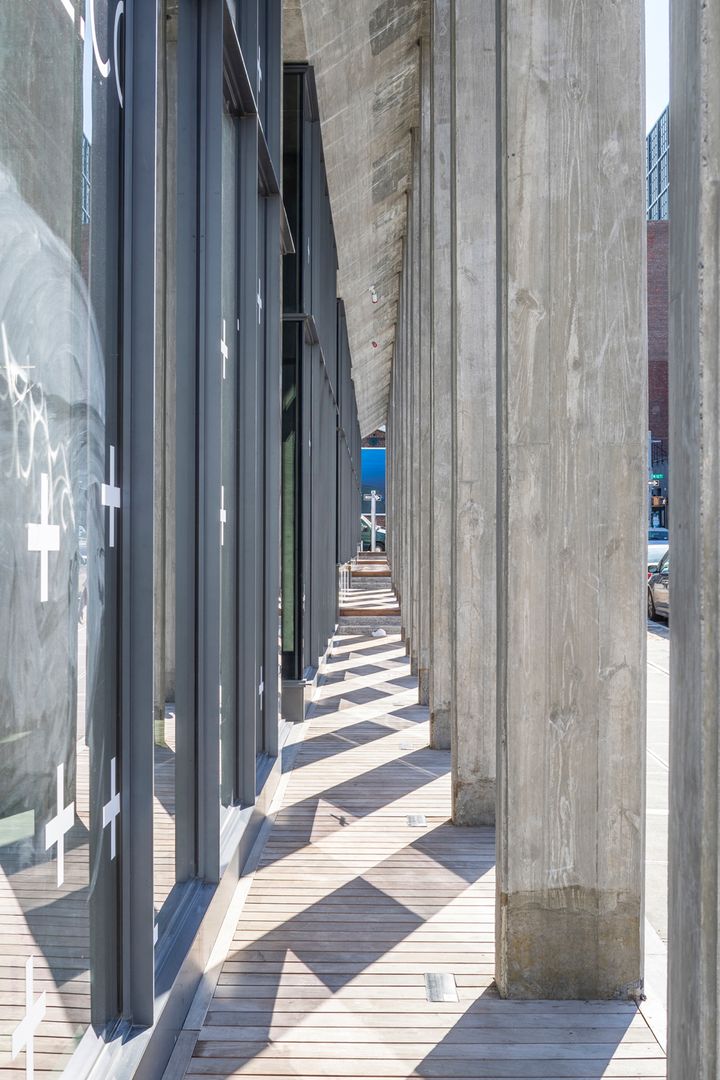
Concrete Colonnade.

Retail Green Roof and Bridge.
Architecturally, these spaces function as ordering devices for the building massings throughout the site. Their form and scale is meant to emulate that of interstitial pedestrian thoroughfares in medieval European urban fabric that are the result of palimpsestine accretive development, in which buildings are constructed on the foundations of older buildings, or around monumental spoglia remnants or ancient infrastructures. We (and probably most people) really like the scale that this very natural and ad hoc development style yields, and we think this sense of scale is instrumental in realizing the existential justification for the project's public spaces - to be engaging and attractive places to hang out in the middle of a rapidly urbanizing part of the city. The project is meant to be an oasis of respite and calm for visitors and locals alike, and these publicly accessible spaces are the backbone of this identity for the project.
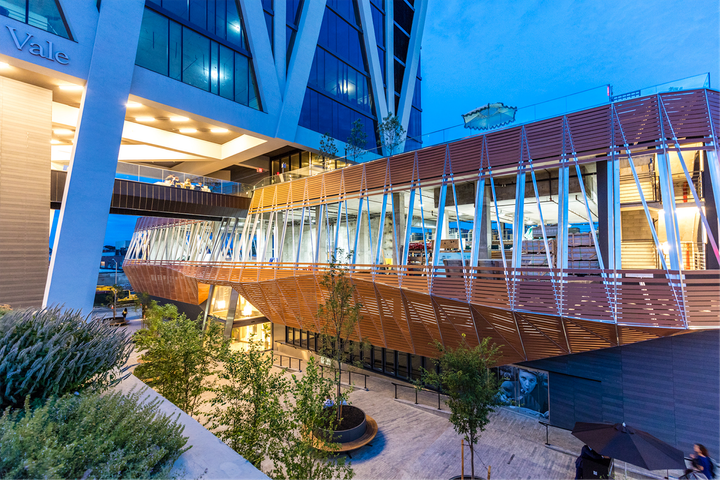
Hotel Building and Plaza.
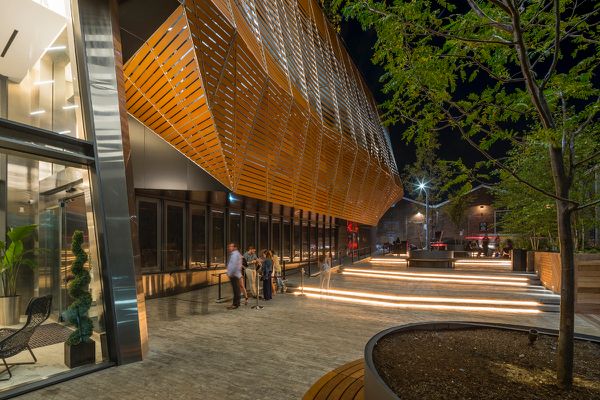
Center Plaza at Night.
Jacob Slevin: What is your favorite design moment within The William Vale?
Yohay Albo& Nick Liberis: The passage through the colonnade from the corner of Wythe Ave and North 12th Street, segueing into climbing the stairs from the street that cleave the retail space and frame a forced perspective of the building legs and truss at the corner of the tower.
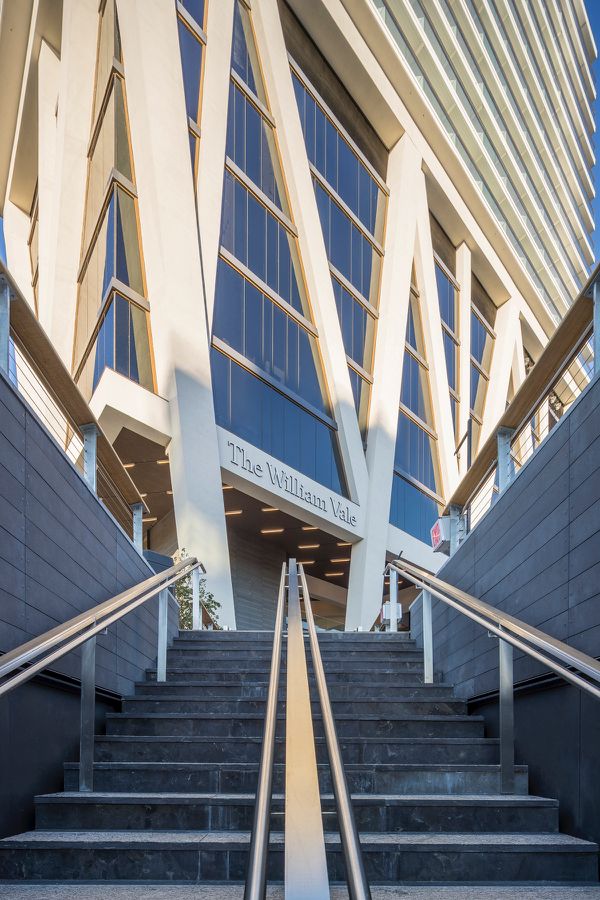
Hotel Tower from Green Roof Stair.
Jacob Slevin: Now looking at the completed building, knowing all of the various iterations, if you were given a second chance, is their anything you’d change in regards to either process or design?
Yohay Albo& Nick Liberis: The experience of the process as a whole was very unique and we don't know if we would change anything, other than doing it in a completely autonomous way as an owner! Regarding the design, it's tempting to say that if we had more time to design, or time to more creatively source materials, the design or its details could've been better resolved or refined, but questions like this are an open ended black hole. It's good enough as is. On to the next question and projects!
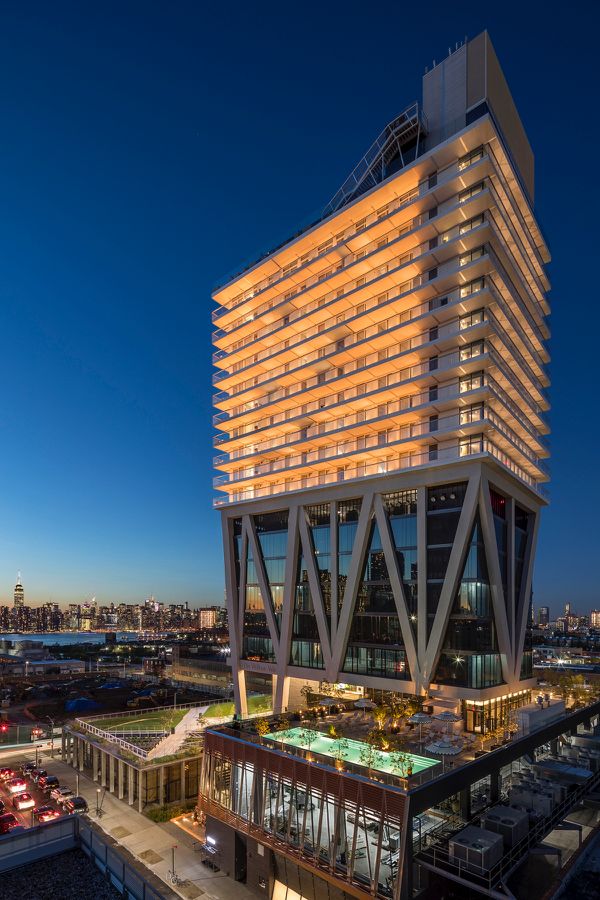
Hotel Tower at Dusk.
Jacob Slevin is the CEO of product search site DesignerPages.com and FF&E specification software platform PRO.DesignerPages.com.